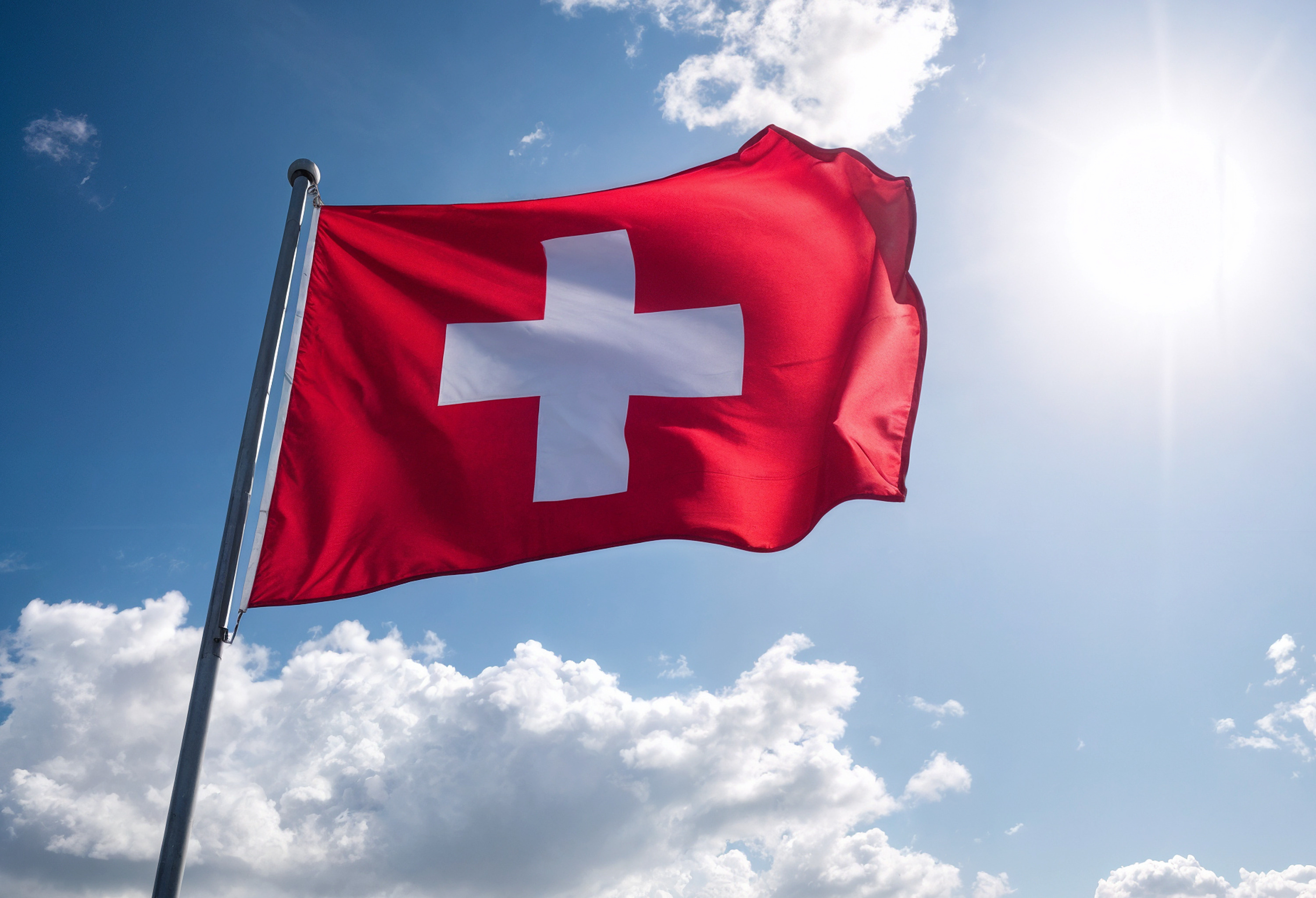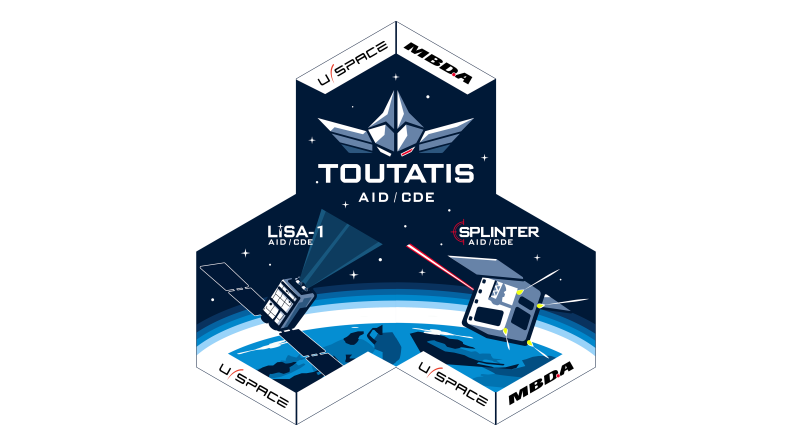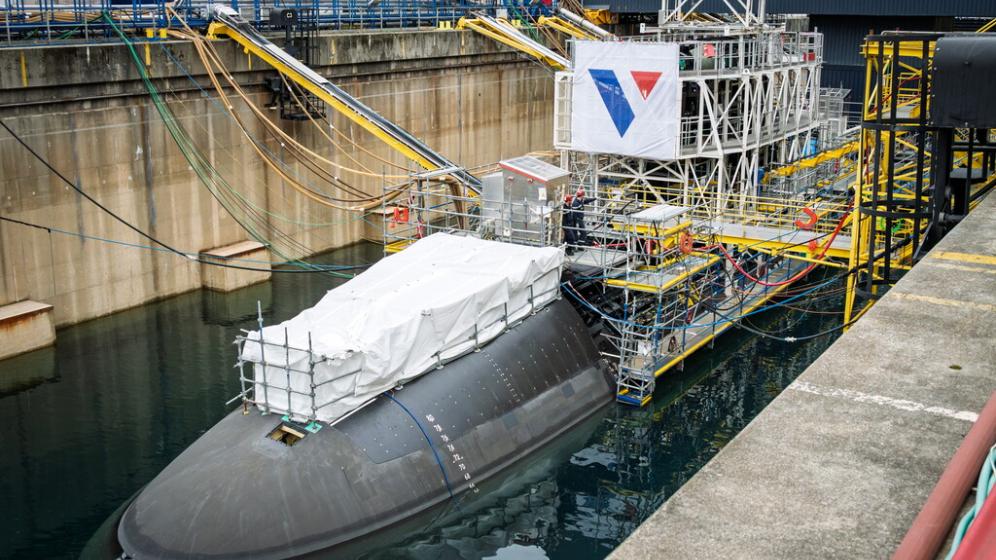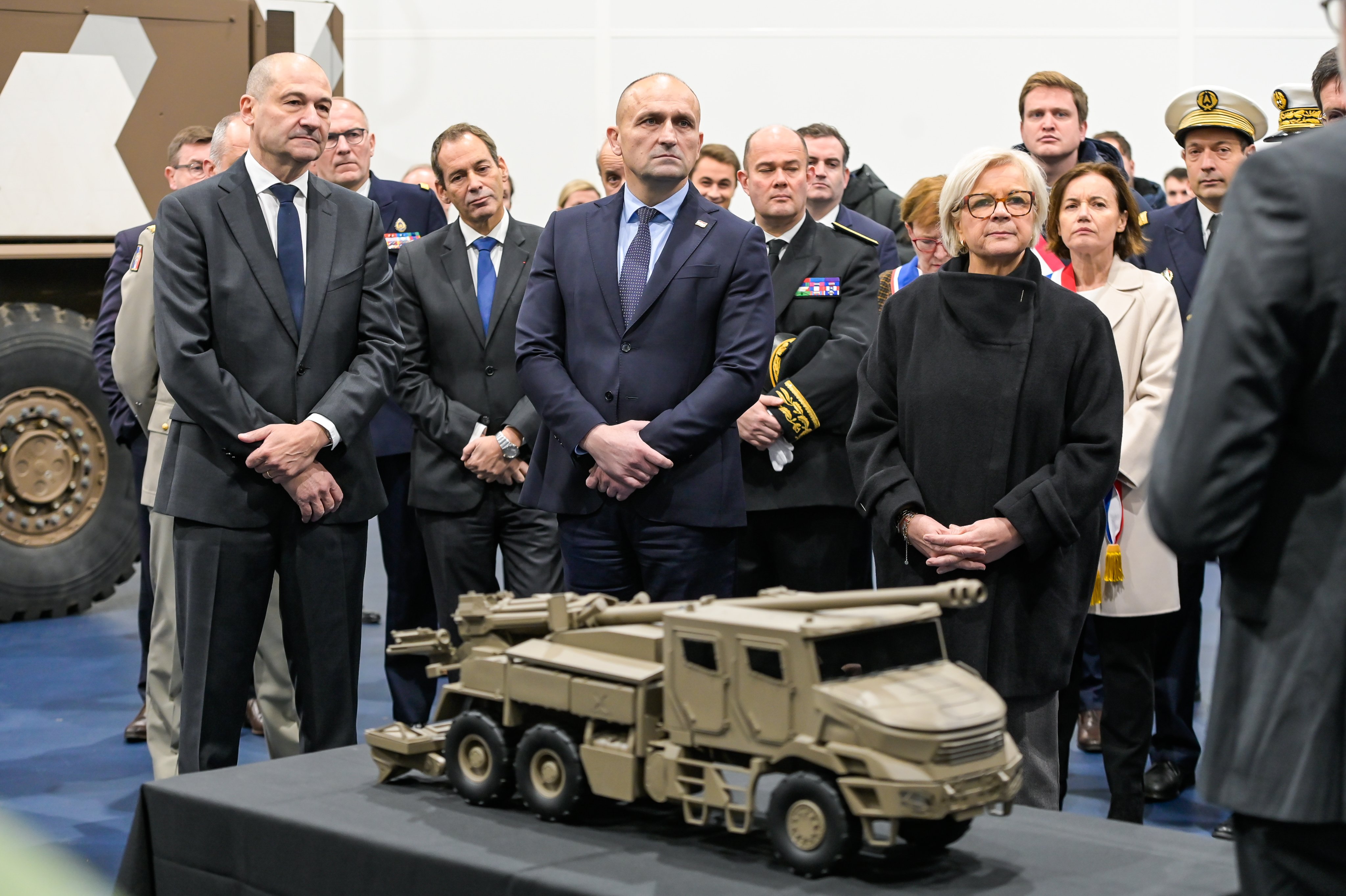The technical nature of the Air Force demands thorough initial training that is complemented on a daily basis by operational preparation. The latter includes instruction of personnel, their in-flight training and battle preparation. Technical progress in simulation opens up new possibilities in the preparation for modern air warfare.
New Perspectives for Simulation
The most modern among air forces operate complex equipment with increasing levels of performance to respond to multiple threats. They often act in coalitions and in delicate strategic environments where error cannot be tolerated. Aircrews need to have a very high level of competence, acquired through a selective training process and maintained by demanding operational preparation that is representative of the type of current conflict in which they might be called upon to act.
This operational preparation is conducted mainly by aircrews’ activity in the air and covers instruction, daily training and hardening for high-intensity combat. Each flight conforms to a programme that is part of the overall operational preparation cycle. In parallel, simulation has been used for over 40 years to teach the functioning of the aircraft, to make the pilots’ gestures automatic and to standardise teamwork.
Recent technological developments in digital matters are continually improving simulation tools in terms of accuracy and networking, and hence immersion, at the same time rendering their use and management easier. They could be employed in many more tasks in simulation and lead to its much more widespread use. The Air Force has developed a far-reaching modernisation programme for its simulation equipment in order to face up to the major challenges of operational preparation. The major fields of application envisaged are massively networked simulation on the ground, offering complex tactical situations and realistic threats, together with simulation in the cockpits of aircraft in flight. The objective is to bring the two together to improve battle readiness.
Why train?
When flying in a cockpit at close to 500 knots, everything happens fast and each action could prove fatal: at the same time the physiological environment (pressure and effect of gravity) tends to reduce everyone’s perception and cognitive capacities. To be the best in combat the operational preparation of aircrew is primordial.
There are three aspects to it: instruction, regular training and battle-hardening. Instruction consists of teaching the technical and operational functions of the aircraft in its normal and fallback modes, then acquiring competences such as aerobatics, blind flying, navigation, formation flying and basic combat manoeuvres. The second aspect involves daily rehearsal of these actions to consolidate the competences at a more demanding level and in an environment more representative of real combat situations. This training covers activities that demand great dexterity, such as in-flight refuelling and live firing. It also maintains coordination of actions and flight trajectories of the team members, understanding of the enemy air picture in order to thwart his manoeuvres and the effective use of the few armaments available. The third aspect is battle hardening, which gives the aircrews the ability to manage complex combat situations in stressful, rapidly changing and unpredictable environments.
Operational preparation is an all-embracing process that brings knowledge, practice and experience whilst keeping up the individual physical qualities that are essential to flight. Moreover, the more complex the aircraft and the mission, the longer and more exacting the training and the more decisive the experience. To have crews able to fulfil all of its missions the Air Force has to provide for these three elements, which depend on several processes: knowledge of the aircraft and its mechanisation, standardisation of procedures, development end maintenance of the warrior spirit, ease and endurance in combat flight and the development of tactical sense, judgement, initiative and leadership. Currently only real flight can train all of these processes simultaneously and allow crews to perform to a high level when faced with the unexpected even when they are exposed to intense levels of stress. For this, they complete 180 flying hours annually. For the past 15 years, commitment to operations has led to a reduction in the proportion of operational preparation flying and an increase in flights over theatres. Whilst these missions are testing, they are centred on bombing (CAS(1) and AI(2)) in uncontested environments, and neglect other aspects of air combat, the acquisition of air superiority in particular.
In parallel with that, the aircraft has become more complex. Twenty years ago, each aircraft was specialised—for bombing (Jaguar, Mirage 2000N and 2000D), air defence (Mirage F-1C, Mirage 2000C), or reconnaissance (Mirage F-1CR). The specific nature of each mission and the equipment tended to separate the specialisations. With the advent of the fully multi-role Rafale, and the reduction in fleets, aircrews now have to be masters of all missions. On the multi-role F-15E Strike Eagle, US pilots fly some 250 hours annually. Budget constraints have held flying hours for Rafale pilots at 180 hours per year, as was the case for the previous generation of aircraft, complemented by 70 hours of simulation to master a far more complex weapon system and the full range of missions. The 180 flying hours are the foundation to ensure safety and endurance under the physiological demands of flight and to develop air sense. They are essential to the pilot for the ability to fly the aircraft while pulling 6 to 9 G, to understand the tactical situation, take the right decisions, coordinate the action of his team members and fire his weapon systems.
Apart from the operational preparation of aircrew, air-related training activity also has to cover the specific training for command and control of operations (C2) and allow for rehearsal of real strike missions. It must involve all players in operations (from tactical to strategic levels) and ensure interoperability with allies.
Battle readiness—acquisition of the highest level of knowledge—comes up against constraints of availability of realistic environments: adequate training areas, representative air and ground-air training targets, electronic warfare systems, mission equipment and more yet.
Whilst simulation today is limited to mechanisation and standardisation, new technologies should permit its use in all aspects of operational preparation.
Advantages and limits of simulation
The remarkable teaching capabilities of simulation allow the acceleration of training cycles in particular. Unconstrained by availability or weather, it offers the possibility to focus on the important phases of flight and allows repeated practice of scenarios and alteration of chosen parameters. Replay of missions supports detailed debriefing and step-by-step improvement in performance. Simulation also allows exploration of dangerous situations that would be too risky to attempt for real, such as breakdowns and aggressive threats.
Simulation alone can help to remove some of the constraints on working up battle readiness, thereby complementing and enhancing real activity. Indeed, only the virtual world allows us to generate the level of threat met today in the most contested of environments.
Despite the lack of any indicator of the cost effectiveness of simulation, it is clear that increasing simulation activity means the length of training can be reduced and that a better level of expertise can be reached for the same amount of actual flying time. This mechanism is in place for Rafale pilot training and will continue with the arrival of the Pilatus PC-21 at Cognac. The US Air Force has trialled new methods with its Pilot Training Next programme, which by relying on massive use of free access to simulation has reduced the initial training time of combat pilots to a quarter of what it was. This experiment shows promise for acquisition of knowledge even though we need to wait for feedback from more consolidated experience, especially on the skills expected of a combat pilot.
Conformity of the simulator to the real system is in all cases fundamental to avoid a negative training effect caused by the time needed to adapt from any artificiality in the simulator to the real system. There are several levels of conformity between the two:
– High conformity: the simulator interface reproduces exactly the aircraft and its capabilities. This is the case for the A400M simulator and the Rafale simulation centres.
– Lower conformity: the simulation equipment reproduces a complex tactical situation almost identical to the real one, with sensations and a visual environment, but the operator is not in a replica of his cockpit. This is the case for latest-generation flight simulation video games.
The prices of simulators vary as a function of the level of conformity, and given that the volume of activity that can be performed with any simulator has limits, it is the objectives of the instruction that will shape the simulation tools to achieve an appropriate level of conformity with real systems. For example, a simulator for basic teaching on the aircraft (say, normal and breakdown procedures and blind flying) and a simulator for advanced tactical training in a network will have very different requirements for fidelity of flight characteristics and representation of cockpit layout. Given budgetary constraints, the development of conforming simulators at reasonable cost is a major challenge for the simulation industry. On PC-21 there will therefore be three types of simulator, each adapted to a different phase of learning.
On the other hand, simulation now faces technical, human and financial difficulties: the slow development of simulation standards that follow those of the aircraft, difficult handling of obsolescence, limited performance of threat modelling thereby prejudicing realism, networking of simulators, security standards for information, lack of personnel for supporting missions and lack of simulators. These constraints reduce the added value of simulation in current training.
Nevertheless, progress in digital technology in the civil sector is cause for optimism vis-à-vis current constraints and gives hope for more widespread recourse to simulation in the future.
Technological developments and perspectives
Simulation already fairly well covers the fields of teaching the aircraft and its weapon systems. Investment now needs to be made in qualitative and quantitative improvement and in interoperability of simulation systems.
The movement towards all-digital simulators will lead progressively to dispensing with the use of real aircraft parts, which will ease updates as standards develop and will reduce markedly the costs of production and maintenance. The growing capacity of AI algorithms will make the behaviour of simulated targets more coherent and more easily modifiable (to make enemies more or less aggressive, for example), in turn making the objectives of the instruction easier to achieve. Improvement in the graphics of virtual and enhanced reality will afford a hitherto unequalled sensation of immersion in the scenario.
These new technologies are a sign of coming equipment that is adaptable, interoperable and natively able to exchange all types of data within dedicated networks.
Conventional simulators and distributed distance simulation
On each combat air base there are between one and four simulators, which do not allow for battle seasoning. The aim of distributed distance simulation (Simulation distribuée distante—SIM2D) is to connect the simulation centres of several bases for simultaneous training within a single virtual scenario. But existing simulators were often developed by different industrial companies and were never designed to exchange information between them.
SIM2D aims therefore to connect them via independent multi-level bridges. In the short term, only the most recent can be connected (those for Rafale and Mirage 2000D). That is an important first milestone but the objective is interconnection of all operational players in the Air Force, including drones, transports, helicopters, air traffic controllers, personnel in operational control centres, ground-air defence operators and those responsible for air support.
Live Virtual Constructive Training (LVC), On-board Simulation and the DMOC
In parallel with developing SIM2D, the Air Force is continuing development work on hybridising LVC, which will enhance the tactical environment of air missions and hence aid optimisation of operational preparation. This hybridisation is operating today at an initial level and around 2025 will enable in-flight combatant training (live) against real or simulated threats generated by AI (constructive) or by piloted simulators (virtual).
Integration of simulation with embarked weapons systems is a prerequisite to ensure compatibility between real and virtual worlds. It means presenting to the crews, via the weapon system, simulated contact tracks as if they were real tracks, in a sense decoying the core system, since the simulated track is not in reality detected by the aircraft’s sensors.
The bases of this technology have long been used on combat aircraft in training modes of fire. Many paths for progress exist, as offered by modern training aircraft like the PC-21, which exchange simulated contacts through data links between the aircraft. Similarly, the use of special pods brings a high degree of operational realism to training flights, in particular via the real-time replay of weapon firings. On-board simulation will be progressively introduced into F4 standard Rafale around 2025.
To gain full potential from SIM2D and LVC, in 2018 the Air Force has created the Distribution Mission Operation Center (DMOC). The aim is to make it the centre for preparation, operation and analysis of a simulated tactical environment by offering simulation sessions on demand. It lays the first brick in constructing future virtual training for multi-environment, connected collaborative combat which the Air Force will develop from now to 2040.
These solutions will give a new dimension to operational training by multiplying the number of participants and possible scenarios. In parallel with the work on SIM2D and LVC, new equipment is appearing which indicate significant change in the use of simulation.
Massive networked simulation
Massive networked simulation (Simulation massive en réseau—SMR) draws on the technology of serious gaming. It uses latest generation simulation software originally intended for public consumption that adheres to natively designed, advanced criteria for realism to allow many players in the same virtual space to interact with each other. With its simple, user-friendly interfaces it is quick and easy to operate, which ensures that personnel will be attentive to their work reducing the need for training staff.
The financial, technical and security constraints of information systems, which make the interconnection of different types of simulator a delicate matter make SMR appear as the most interesting way ahead for providing extremely effective mass simulation structures at reduced cost. Such simulation tools will cater for battle hardening for experienced crews in addition to conventional simulators.
They are being tested experimentally now in the Air Force. A proposal to proceed to full-scale work is being studied by the Defence innovation agency (Agence de l’innovation de Défense—AID), with the aim of introducing the initial capability at the end of 2019, at this stage on the Mirage 2000. It means that initial feedback will be rapidly obtained and used for the incremental design of future equipment.
For SMR to be developed, the industries that equip the Air Force will need to be involved in order to reproduce the flight characteristics of aircraft to the required level of fidelity. Development of these tools will in time be an advantageous complement to their simulators by providing an extra module that is adapted to high-level training thereby creating a full-ranging simulation structure.
Whilst the need for a high level of system conformity remains essential for instruction and basic training, the combination of haptic technology with virtual and enhanced reality means in the much longer term that current simulators’ physical cockpits could be replaced by totally virtual ones from which crews will be able to operate all controls identically in manner to the real environment. This revolution will see lighter, less costly systems that afford a wide range of use, in turn opening the way to development of simulation systems for other specialisations, such as mechanics and commandos.
* * *
In response to changing training needs, the Air Force is progressing with the transformation of its simulation equipment by drawing on new technologies to generate significant developments in the uses and modes of working, ultimately to permit better fulfilment of its missions.(3) Whatever the benefits of virtual training, flying remains essential. Nothing can replace it for testing materiel, verifying the correct functioning of sophisticated weapon systems and especially for building air sense in the aircrews and mastering the physiological constraints of the real world, such as spatial disorientation, the gravity factor, combat stress, meteorology and its consequences on holding formation, danger from birds and de-confliction with civil air traffic.
Simulation is an essential complement to perfecting training and operational preparation: it allows accelerated progression and an increase in tactical skills, but it is neither palliative nor a cheap substitute.
Simulators need to evolve towards becoming faithful tools, easy to operate at the squadron level by the crews themselves. That will ensure that personnel are on-side, an essential factor for achieving the aims of increased activity and wider use of simulation. SMR is a promising way ahead for obtaining conforming, connected and immersive equipment at a moderate cost with which everyone will be able to train himself with greater ease and more often to the benefit of the performance of combat forces. ♦
(1) Close Air Support.
(2) Air Interdiction.
(3) Paraphrased extract of report annexed to law No. 2018-607 on the military programme for the years 2019 to 2025, 13 July 2018 (www2.assemblee-nationale.fr).









